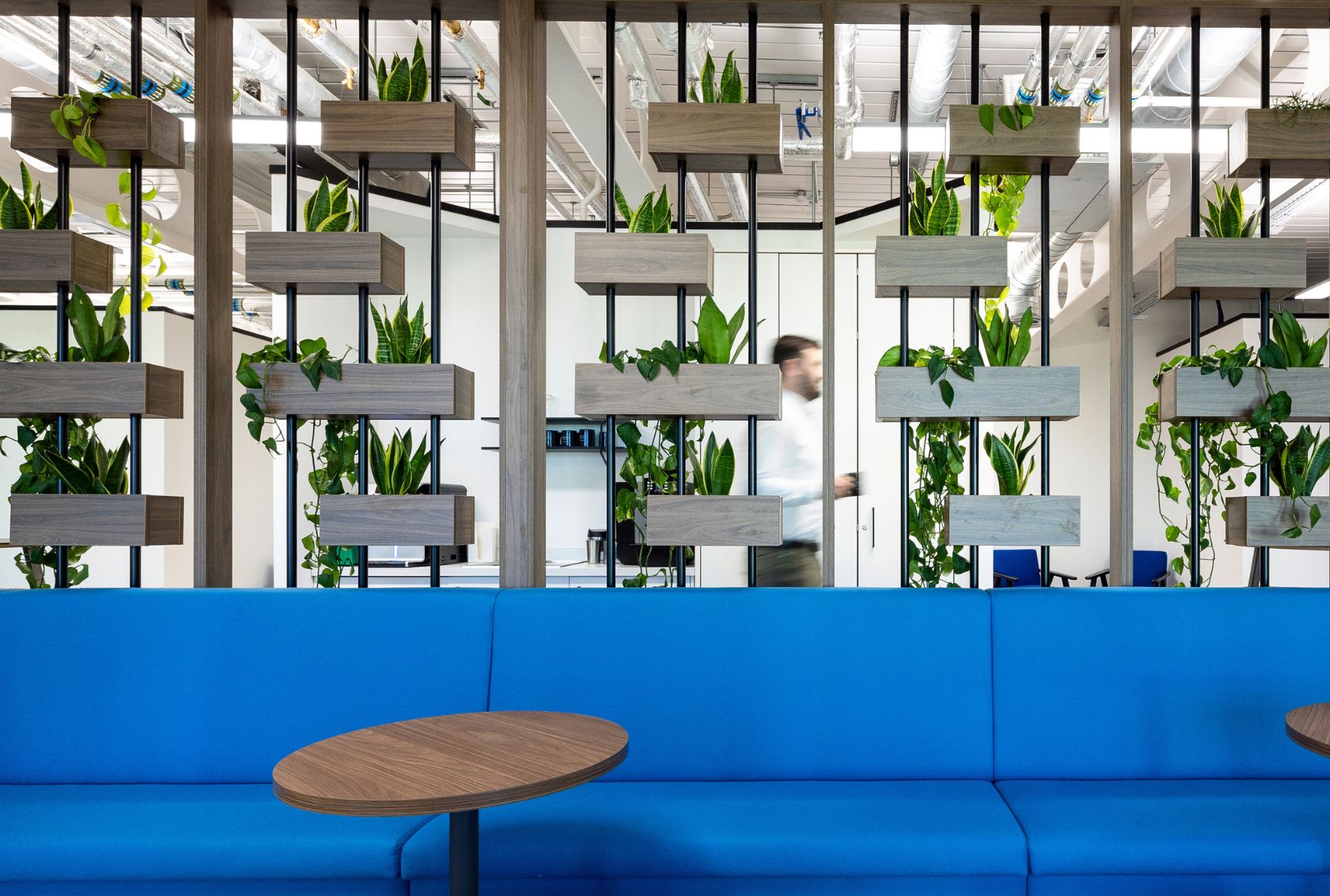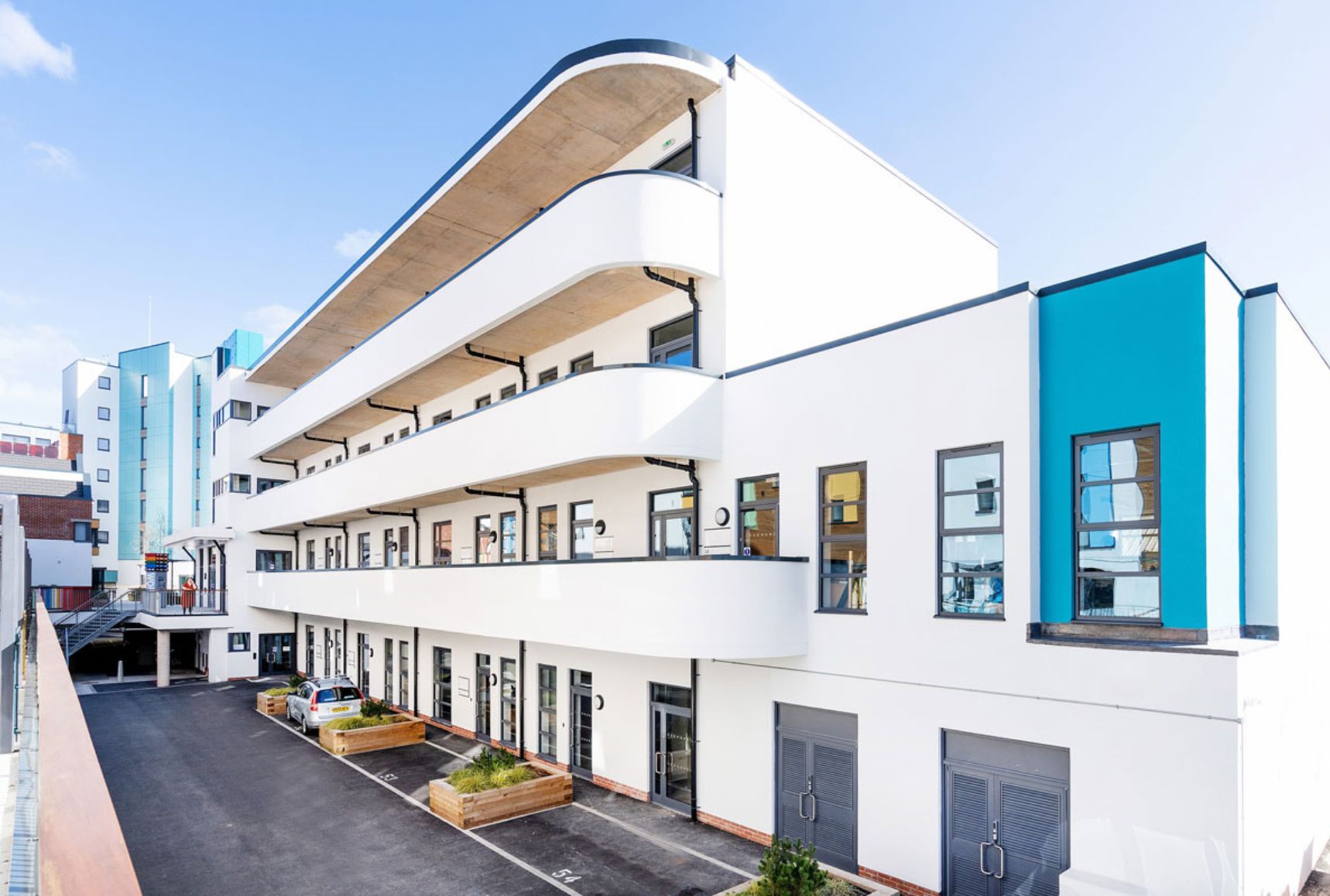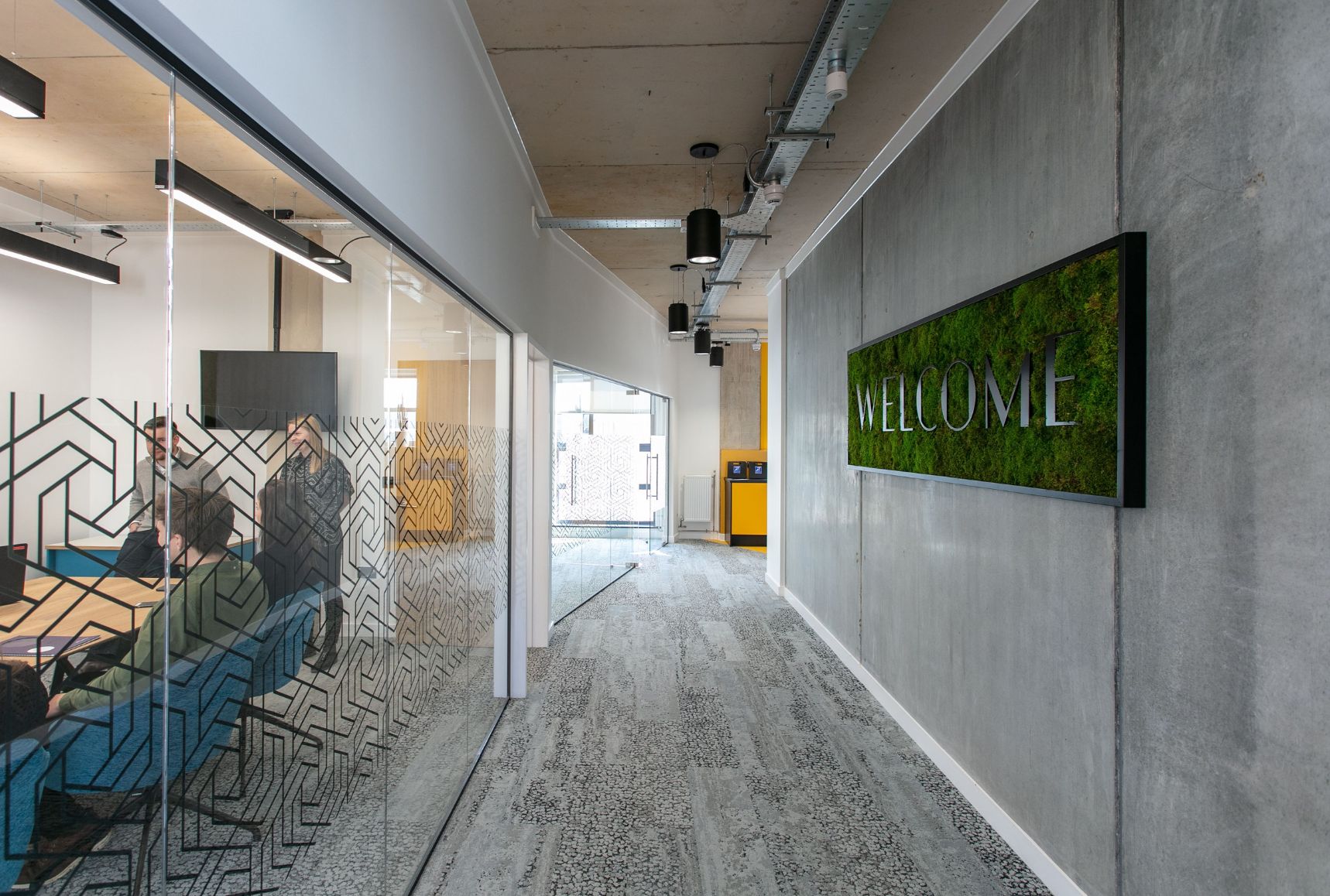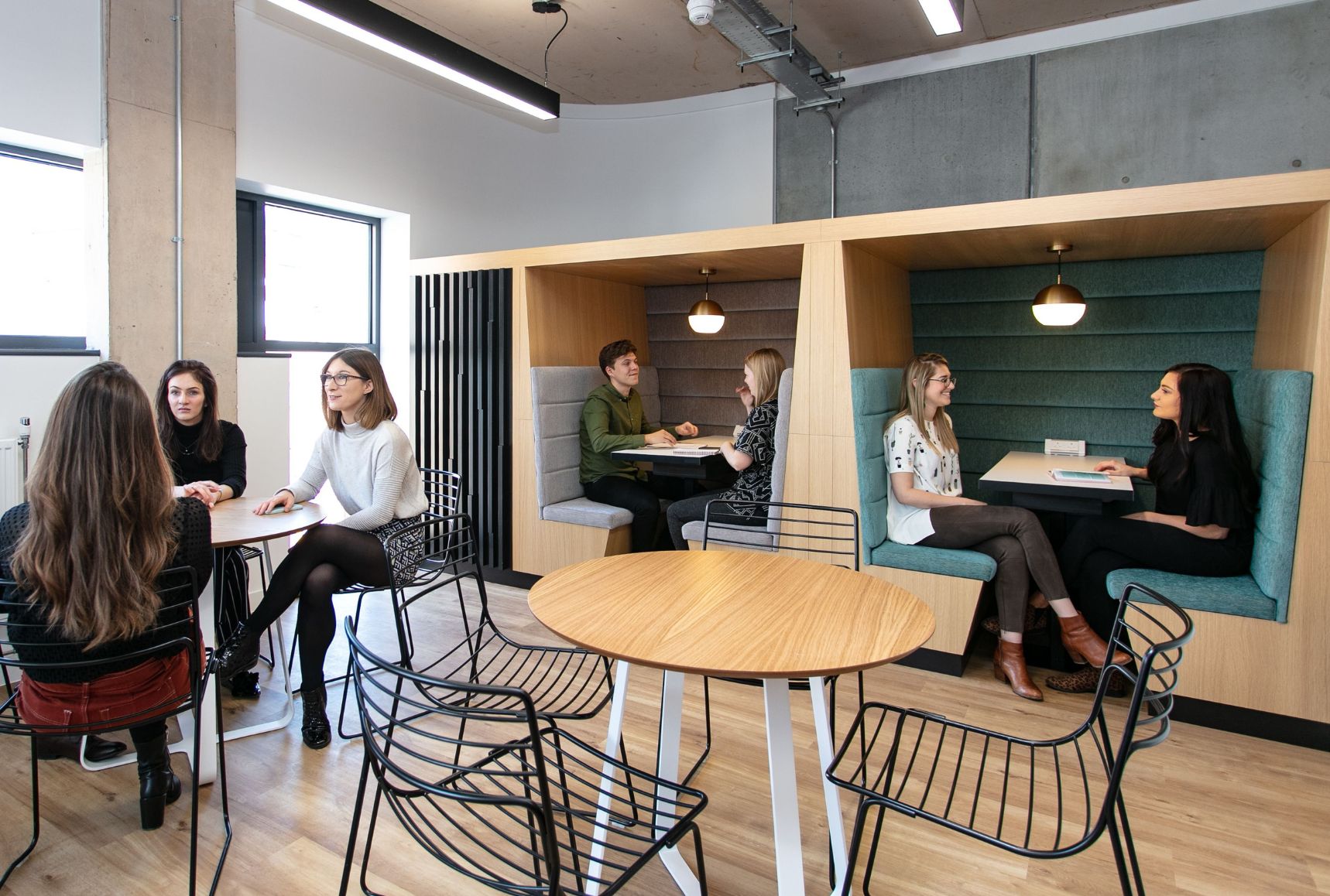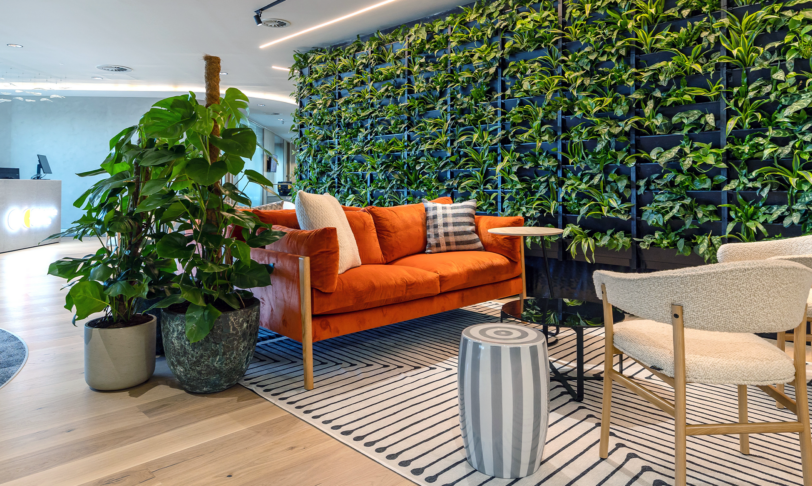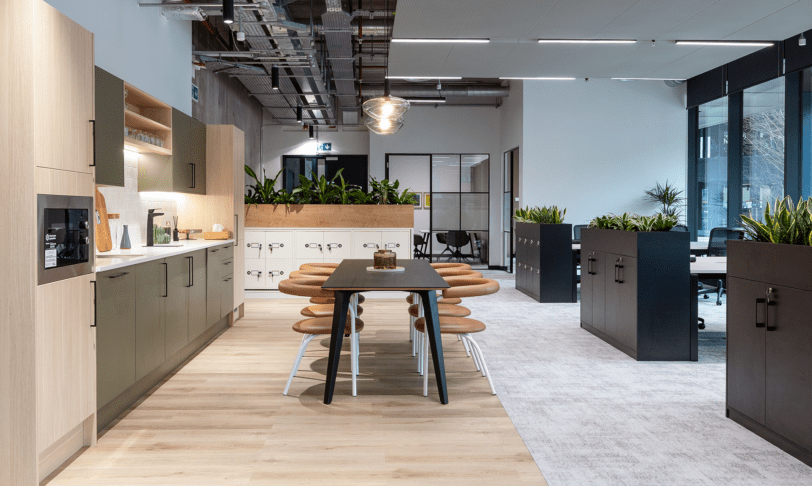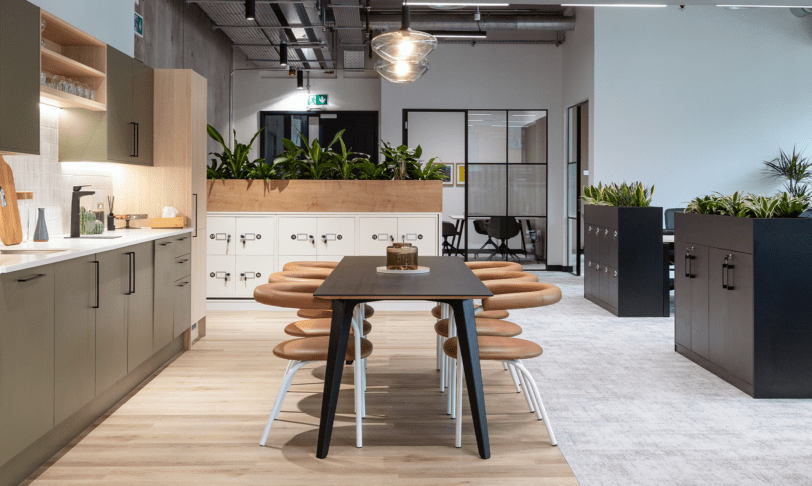How to ensure a sustainable office fit-out
What is a sustainable office fit-out?
A sustainable office fit-out is about creating a new workspace that reflects your company’s commitment to reducing its environmental impact, as well as its brand identity and the needs of its employees. This is best achieved by redesigning or refurbishing your office with sustainable materials and practical solutions to reduce waste and energy consumption.
Why is sustainability important in office fit-outs?
We should all strive to be more sustainable in every aspect of our lives, whether as individuals or as part of a group or organisation. By doing so, we can help mitigate the impacts of climate change and preserve natural resources while also improving our overall quality of life.
According to the World Green Building Council, the construction industry generates an estimated 39% of the world’s carbon emissions. That’s why we value sustainability as a crucial part of every single project we undertake, cutting no corners to meet our goals.
In the workplace, sustainable measures can maximise value by conserving resources and reducing operating costs. This is primarily achieved through using more efficient materials and systems, as well as reducing waste. Commercial landlords can also attract forward-thinking, responsible tenants who prioritise their sustainability goals.
Sustainability standards for office fit-outs
As a leading sustainable office fit out company, we adhere to a wide range of benchmarks and credentials, each one offering a slightly different, but no less important, contribution.
- BREEAM
Building Research Establishment Environmental Assessment Method (BREEAM) is a UK-based certification covering a range of sustainability measurements to achieve Environmental, Social and Governance (ESG), health and net zero goals. BREEAM ratings are: Outstanding, Excellent, Very Good, Good and Pass. In the British Council for Offices (BCO)’s 2023 Sustainability targets, they now recommend a minimum target of ‘Excellent’, up from previous recommendations of ‘Very Good’. BREEAM Certifications are influenced by the below factors.
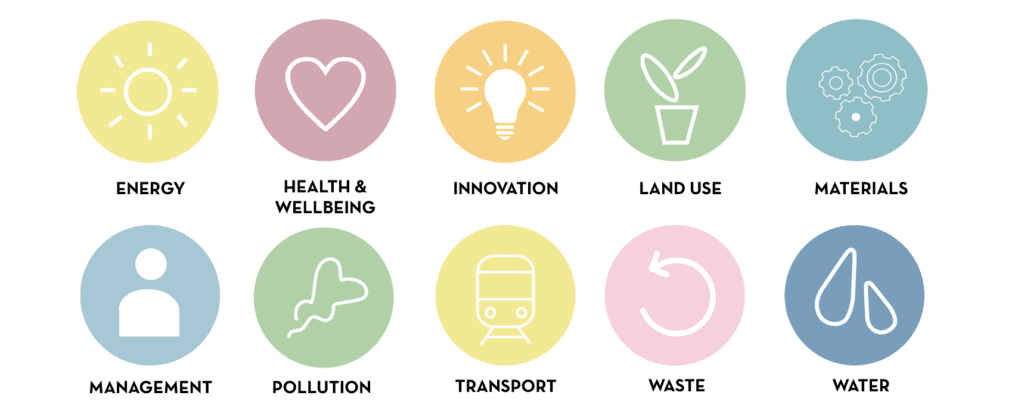
- SKA
The SKA rating is specifically tailored to non-domestic fit-outs, whereby a building can achieve a SKA Bronze, Silver or Gold rating depending on its environmental performance. The SKA Assessment criteria (known as good-practice measures) are energy, CO2, waste, water, pollution, transport, materials and wellbeing. - WELL Building Standard
This standard seeks to address behaviour, operations, design and overall health in the built environment. Mental health resources, nutritious food choices, and physical activity strategies are just some of the features which WELL certified buildings may include. WELL measures against the factors listed in this infographic.
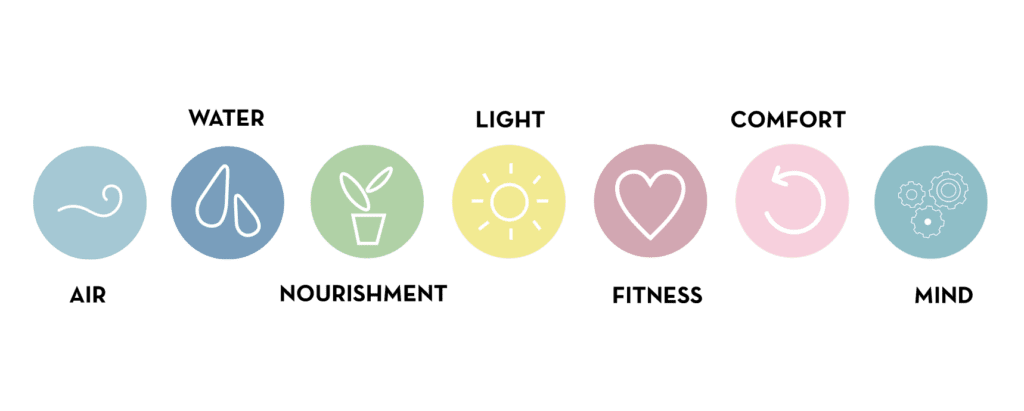
- LEED
Leadership in Energy and Environmental Design (LEED) certifications focus on building efficiency and reduced carbon emissions. It is a holistic point-based system addressing carbon, energy, water, waste, transportation, materials, health and indoor environmental quality. This certification looks at how these factors coalesce to have a bigger impact on sustainability. LEED certified buildings aim to reduce carbon emissions and preserve ecosystems while also enhancing health and wellbeing.
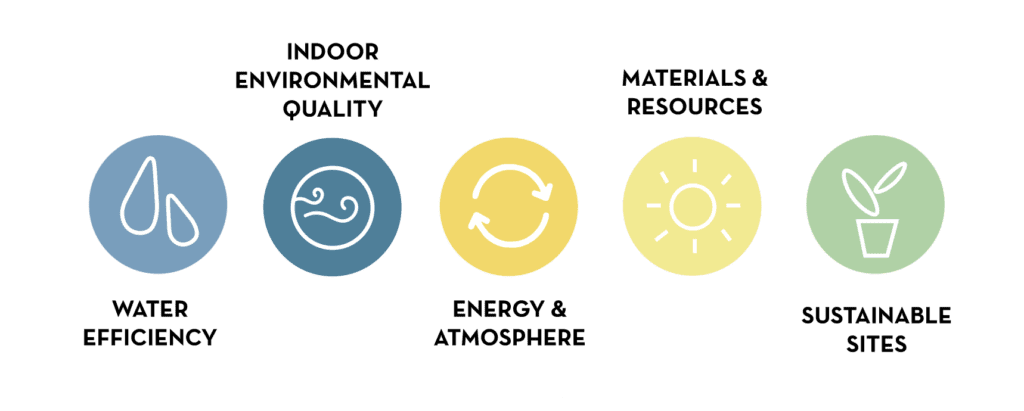
A business should decide what they think is going to make the biggest difference not only to the sustainability of the space but the wellbeing of their employees.
Interaction’s Ultimate Guide to Office Fit-Outs
Business owners, landlords and property developers can find everything they need to know about office fit-outs in our guide, including strategy, budgets and finding the perfect location.
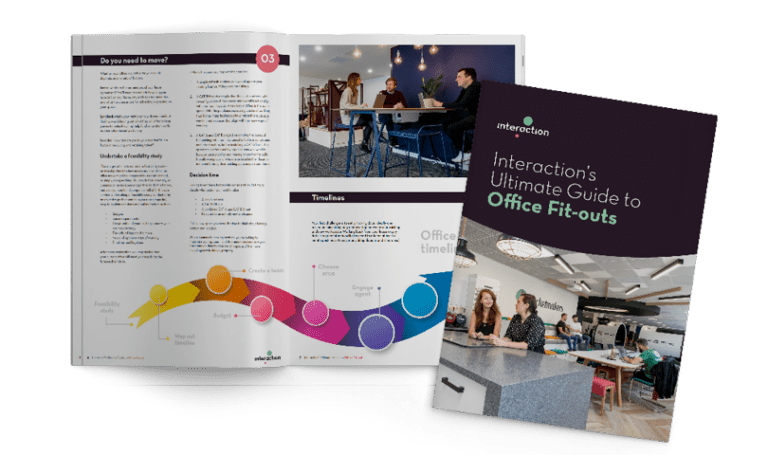
6 key features of a sustainable office fit-out
1. Using local suppliers and manufacturers
Not only is it easier to communicate with local suppliers, but using them helps to reduce emissions and support local economies. This allows businesses to have a better oversight of the products and materials they are using.
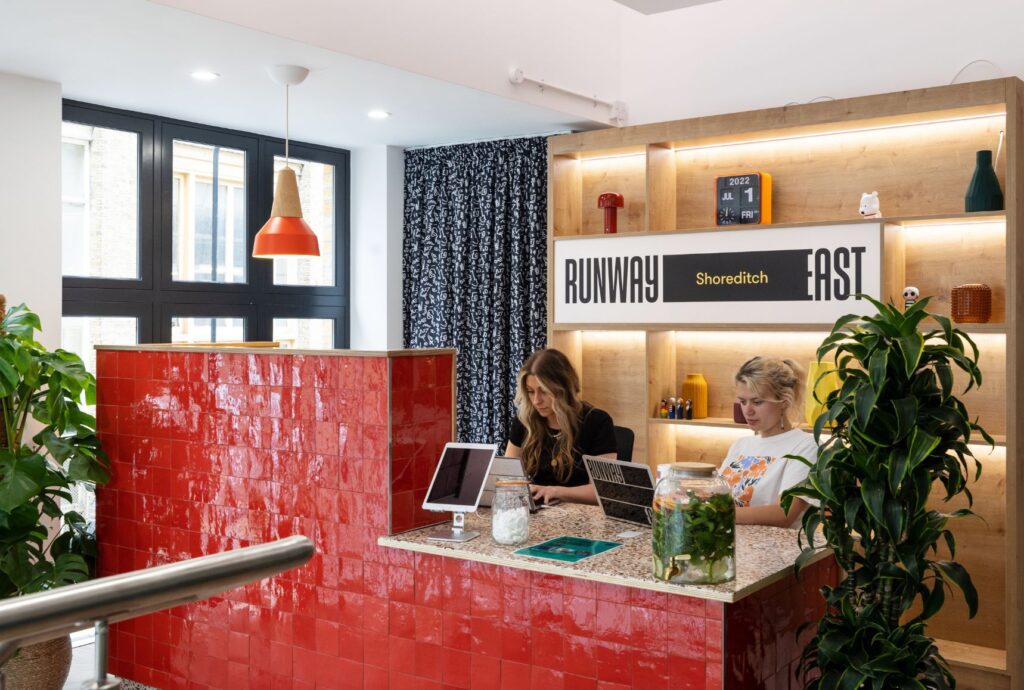
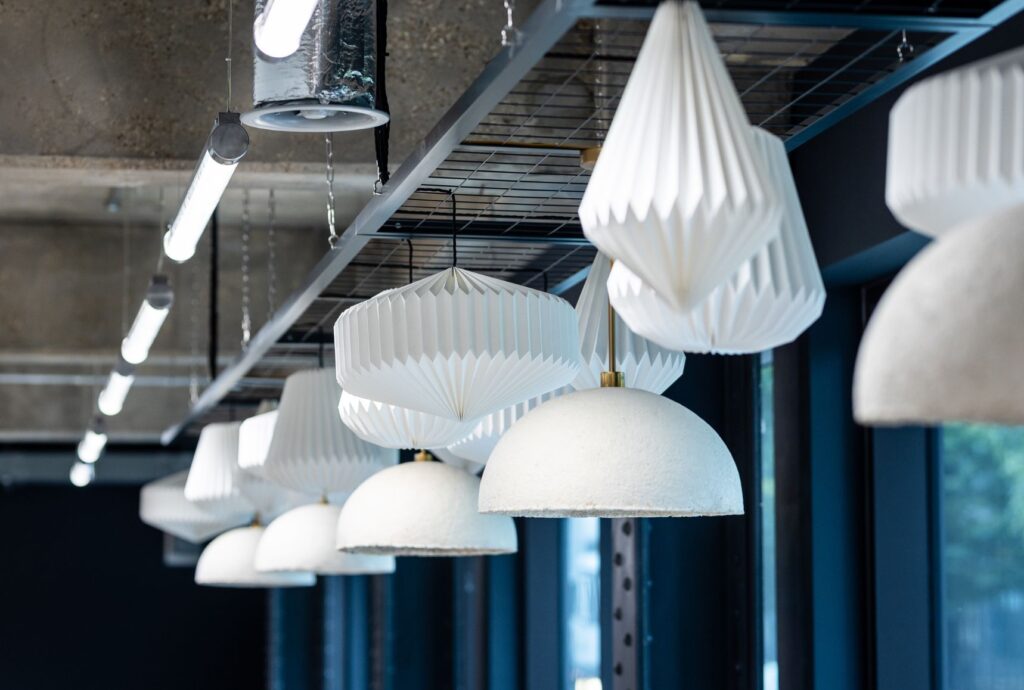
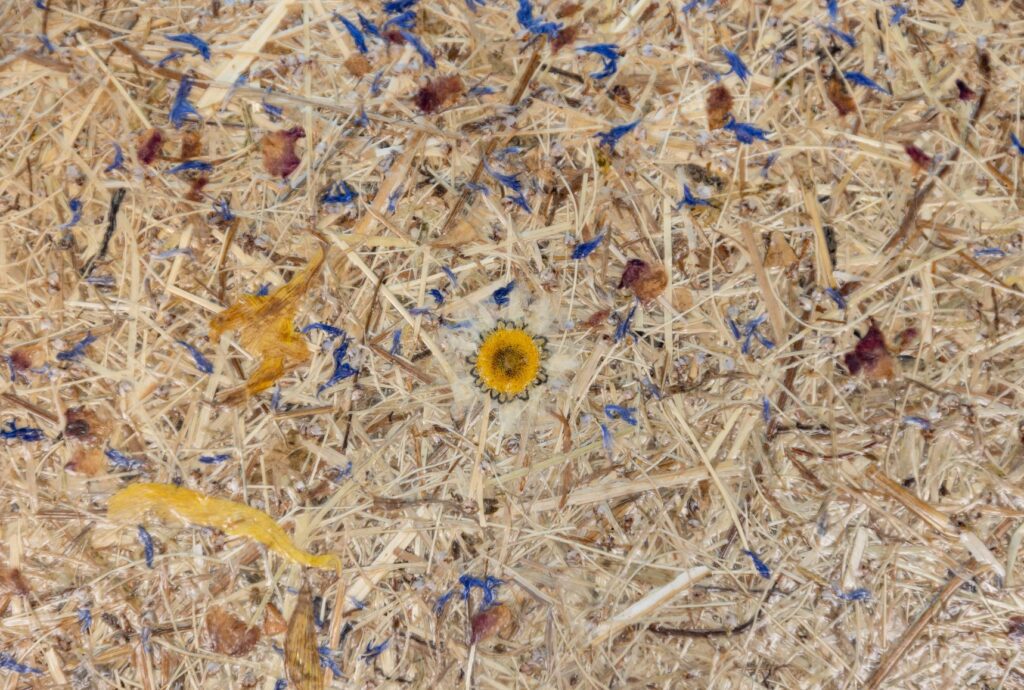
2. Eco-friendly and recycled materials
Switching to eco-friendly building materials will have a smaller impact on the environment. They can be produced in a sustainable way and are easier to dispose of or recycle. By using these materials, carbon emissions can be significantly reduced and you can also save energy.
Examples of sustainable construction materials are cork, straw, bamboo, enviroboard and clay brick.
Reusing and recycling materials such as steel, wood, plastic and rubber is a great way to avoid sending them to landfill. Plastic takes up to 1,000 years to decompose in landfill, so reusing or recycling existing plastic material will reduce its environmental impact. Compared to concrete blocks, recycled plastic results in 95% lower greenhouse gas emissions when made with a carbon-neutral manufacturing process.
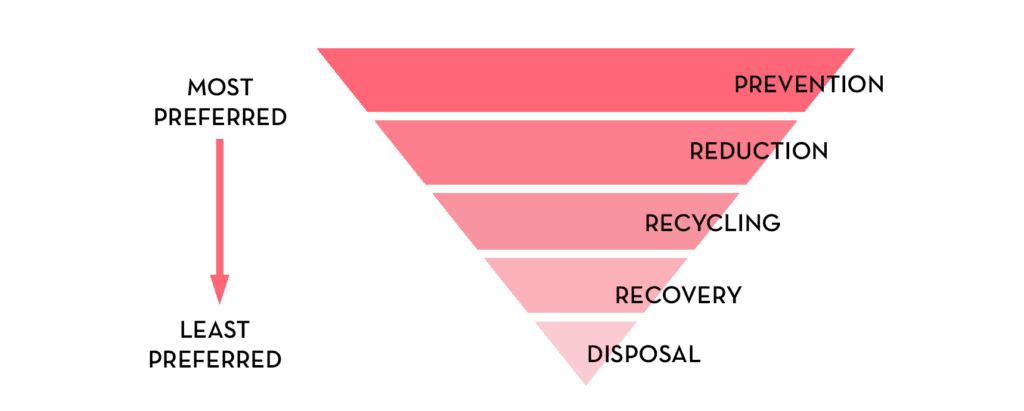
3. Energy efficient and natural lighting
You can reduce the need for artificial lighting by relying more on natural light. Natural light improves air quality but has also been linked to improving people’s moods and their productivity. In the case that artificial light is needed, energy efficient lighting systems such as LED and CFL bulbs reduce energy consumption by 75-80% and last longer than traditional incandescent bulbs. More efficient lighting installations are now an aspirational 2023 target set by the BCO. Also, increasing the amount of natural lighting in a space comes with many health benefits. Sleep can improve, seasonal depression is decreased, vitamin D intake rises, and the result is improved personal wellbeing. This can help the building achieve a WELL certification, as well as criteria in other 3rd party certification standards.
4. Energy management systems
An Energy Management System (EMS) is used to monitor, control and optimise energy usage in a building. They improve energy savings which in turn reduces greenhouse gas emissions. They also create a more comfortable working environment by improving air quality and controlling temperature, lighting and ventilation.
By tracking energy usage in your building, targets can be set based on the data recorded over previous years and months. This ensures your benchmarks are realistic and achievable so you can maintain an accurate grasp on your usage.
5. Biophilia
Biophilic design is all about bringing the outdoors in to create a healthier, greener office. Think of adding plants to purify the air and balance humidity or using natural light to save energy and boost moods. It’s a simple way to make your office more sustainable and a happier place to work. Living walls are not only visually appealing but they also play a role in reducing CO2 and regulating office temperatures.
6. Sustainable soft finishes
Office flooring, fabrics, and other soft finishes can also be eco-friendly. Options like carpet tiles made from recycled materials, biodegradable fabrics, and sustainable wood not only reduce environmental impact but are also durable and can be easily maintained or replaced. Choosing these sustainable alternatives helps further reduce the office’s carbon footprint and supports a healthier indoor environment.
Chat with Charlie
Get in touch with Charlie, our Relationships Manager to discuss how we could revolutionise your space.
Email: [email protected]
All general enquiries
Phone: 01225 485 600
Email: [email protected]
Or sign up for our newsletter here

How much does a sustainable office fit-out usually cost?
The cost of creating a sustainable office fit-out varies greatly and depends on several factors including the size of your office, design complexity, and the choice of sustainable materials and furnishings. Opting for ready-to-use, ‘plug and play’ solutions might come at a higher initial cost compared to more traditional approaches like Shell and Core projects, but they offer the advantage of immediate usability. For a tailored estimate, a detailed look at your specific project requirements is essential. To explore how a sustainable office fit-out can transform your workspace and understand the costs involved, get in touch with us today.
Sustainable office fit-outs from Interaction
Osborne Clarke – Halo Building
We recently finished on site at Halo, delivering five storeys of state-of-the-art design and fit out services to law firm Osborne Clarke. The Halo building is one of the most sustainable buildings in the UK. Not only was it one of the first buildings in the UK to achieve BREEAM Outstanding under the new 2018 BRE Regulations, it also has a certified WELLBuilding standard.
Halo is connected with Bristol’s district heating network for low carbon heating, along with the regeneration of energy from descending lifts. Compared to notional figures calculated from the methodology followed in HM Government (2013), Halo has 35% less energy consumption, 47% less carbon emissions and 69% less water consumption (Improvement over figures stated in; BSRIA (2011). Rules of Thumb, Guideline to Building Services, 5th ed. 54% improvement over calculated baseline in BREEAM (2018)).
To see more, why not take a look at our Osborne Clarke case study?
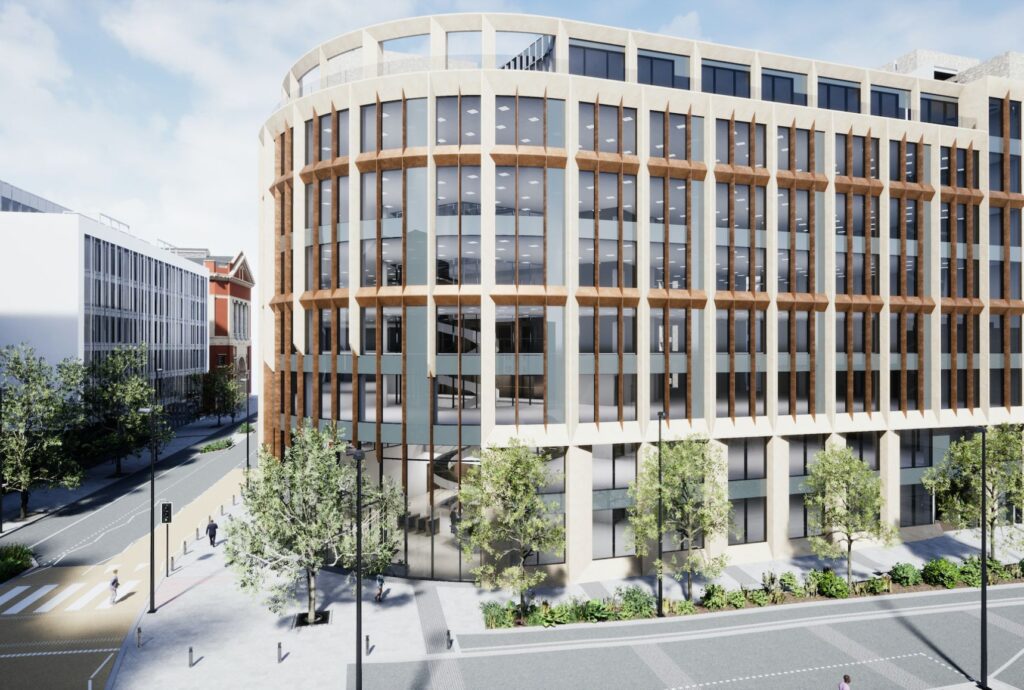
Amdaris – Aurora Building
Bristol’s Aurora Building in Finzels Reach is another one of just a few in the UK which has achieved a BREEAM rating of ‘Outstanding’ under the strict new scheme. Aurora has also achieved LEED Gold certification through its use of rooftop solar panels, intelligent LED lighting and water saving technology, all of which help to reduce running costs. Earlier this year we delivered software engineers Amdaris their creative new workplace which takes space in the ground floor of Aurora.
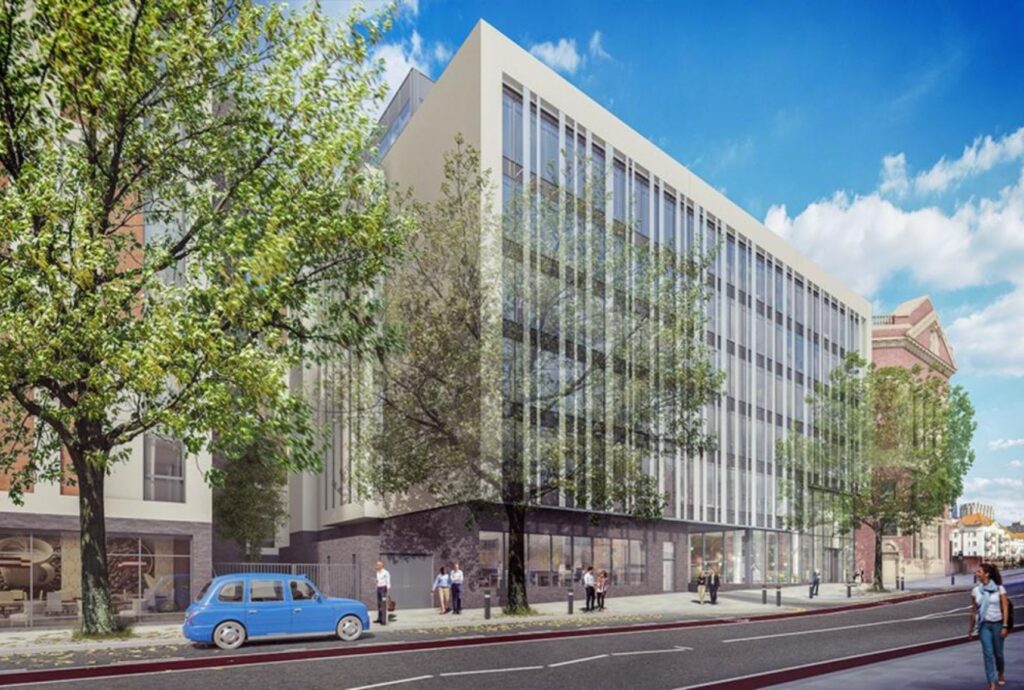
Ethical Property – Streamline Building
Housed in Bristol Paintworks’ Streamline Building, Ethical Property benefits from a site-wide district heating system, photovoltaic solar panels on the roof, passive ventilation system and double glazing throughout. We delivered an ‘Excellent’ BREEAM Certification on our fit-out of Ethical Property. Paintworks also reduce unnecessary energy usage by using daylight linked and absence detection lighting controls.
Runway East – The Hickman
Co-working space providers Runway East achieved a BREEAM ‘Excellent’, SKA Silver, and EPC rating A at The Hickman. When delivering their fit out, we used sustainable materials such as organoid, mycelium and foresso.
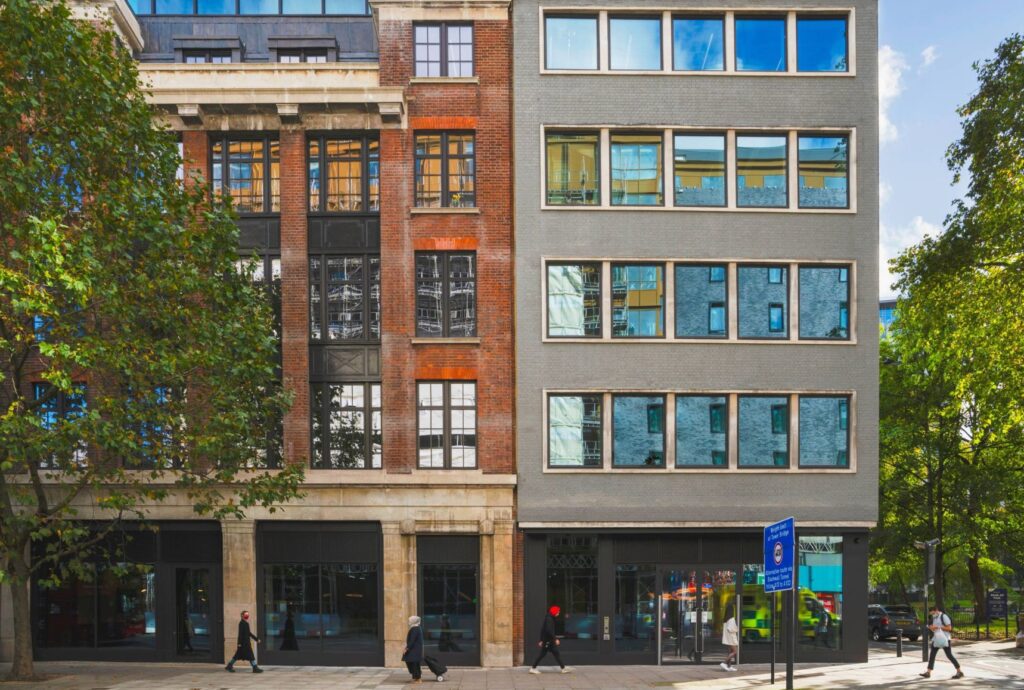
Embracing eco-friendly practices post-fit-out: a few ideas
Taking a deeper look at post-fit-out practices, here is how you can infuse more everyday sustainability into your office:
- Mindful consumption: Encourage conscious consumption by sourcing office supplies that champion recyclability and sustainability. Opt for items with minimal packaging or those that come from recycled materials.
- Green travel initiatives: Foster a culture that supports carpooling, biking, or public transportation. Set up a bike storage area or offer incentives for employees who choose eco-friendly commuting options.
- Waste reduction strategies: Implement a comprehensive program to minimise waste. This could include digitising workflows to reduce paper use and providing reusable kitchenware to cut down on disposable items.
- Environmentally conscious cleaners: Use cleaning agents that are free from harsh chemicals and are biodegradable, safeguarding both your employees’ health and the environment.
- Water conservation: Install low-flow faucets and toilets, and encourage practices that reduce water use. Consider collecting rainwater for watering plants.
If you’re inspired by our sustainable office designs and want one of your own, get in touch at 01225 485 600 or why not schedule a chat with Charlie. We’ve been creating some of the UK’s best workspaces for over thirty years, so we’re happy to help with all your office fit-out needs.
